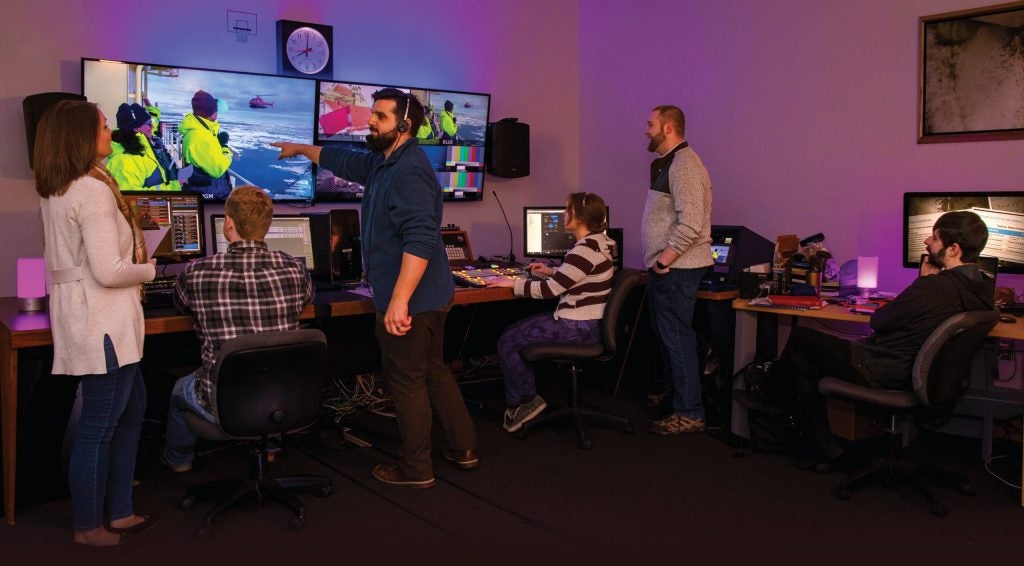
I also maintain the production equipment, and later, I archive the show recordings.”
The Inner Space Center’s Production Control Room translates science from the field into real-time, relatable stories. Click on the beacons in the photo above to learn about the Production Control Room and the team that keeps the show going, no matter what.
URI’s one-of-a-kind, internationally known Inner Space Center delivers science, in real time, to the public and to other scientists. Using telepresence—the ability to interact with what’s going on in one place while you’re somewhere else—the center links scientists on research vessels at sea with other scientists, the media, and schools.
The production control room is the heart of the operation, turning all the incoming and outgoing feeds into seamless broadcasts. Producer Andrea Gingras ’01 says, “Live production is like a puzzle. I try to put the pieces together before we even start so that when we say, ‘That’s a wrap,’ the audience sees the full picture.”
In October 2019, for example, the center used ship-to-shore telepresence in a pilot project funded by the National Science Foundation. The production control room crew put its telepresence chops to the test, connecting scientists on the R/V Laurence M. Gould in the Western Antarctic with classrooms around the country, giving students an incredible opportunity to interact in real time with scientists conducting critical research.
Sound as easy as turning on a livestream? It’s not. It takes a lot of equipment and a multitasking crew with technical know-how, science background, creative leanings, and communication skills—real communication skills—knowing how people listen and learn, and knowing how to effectively and authentically translate science into stories people can relate to. •
—Barbara Caron
